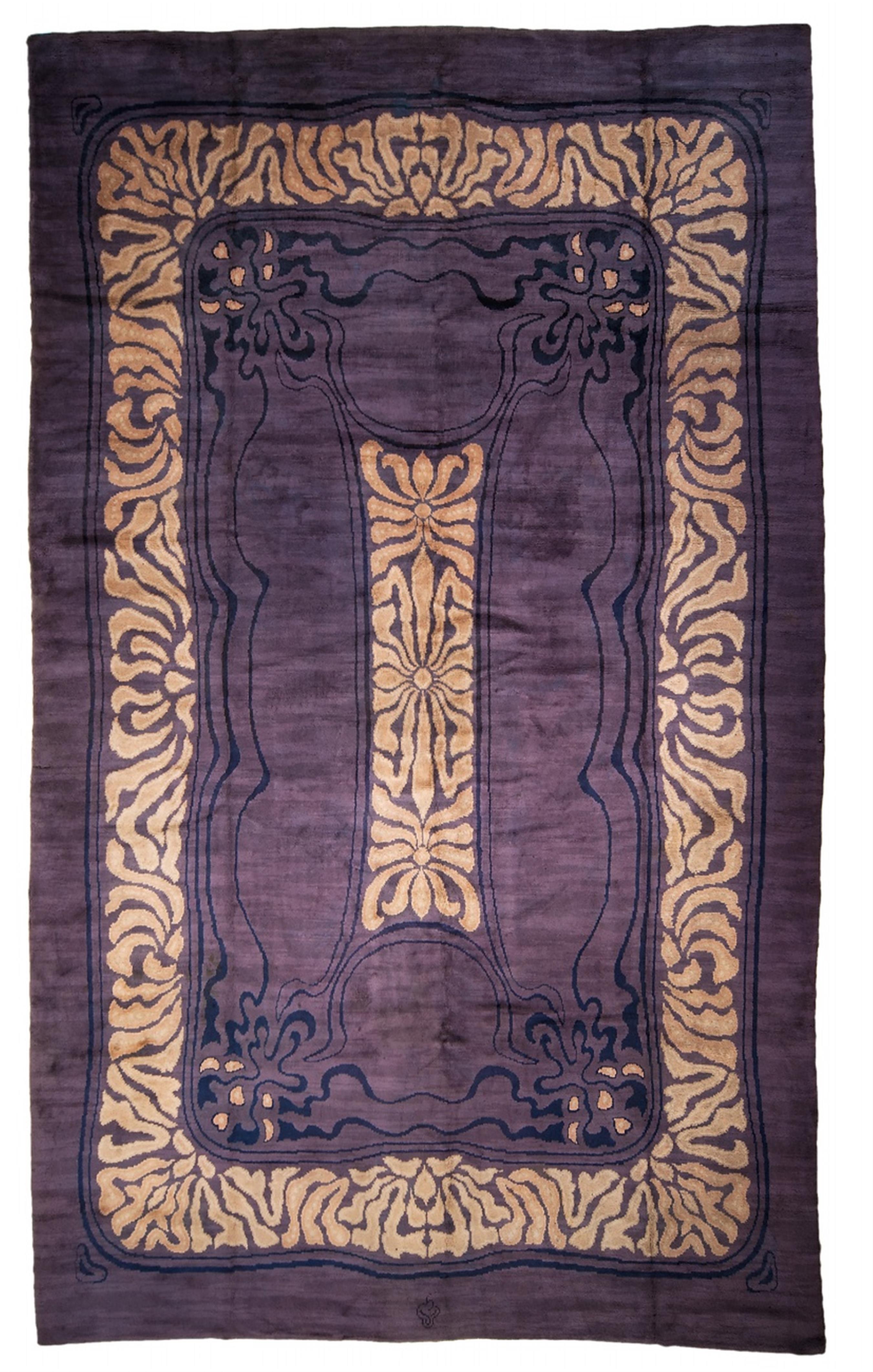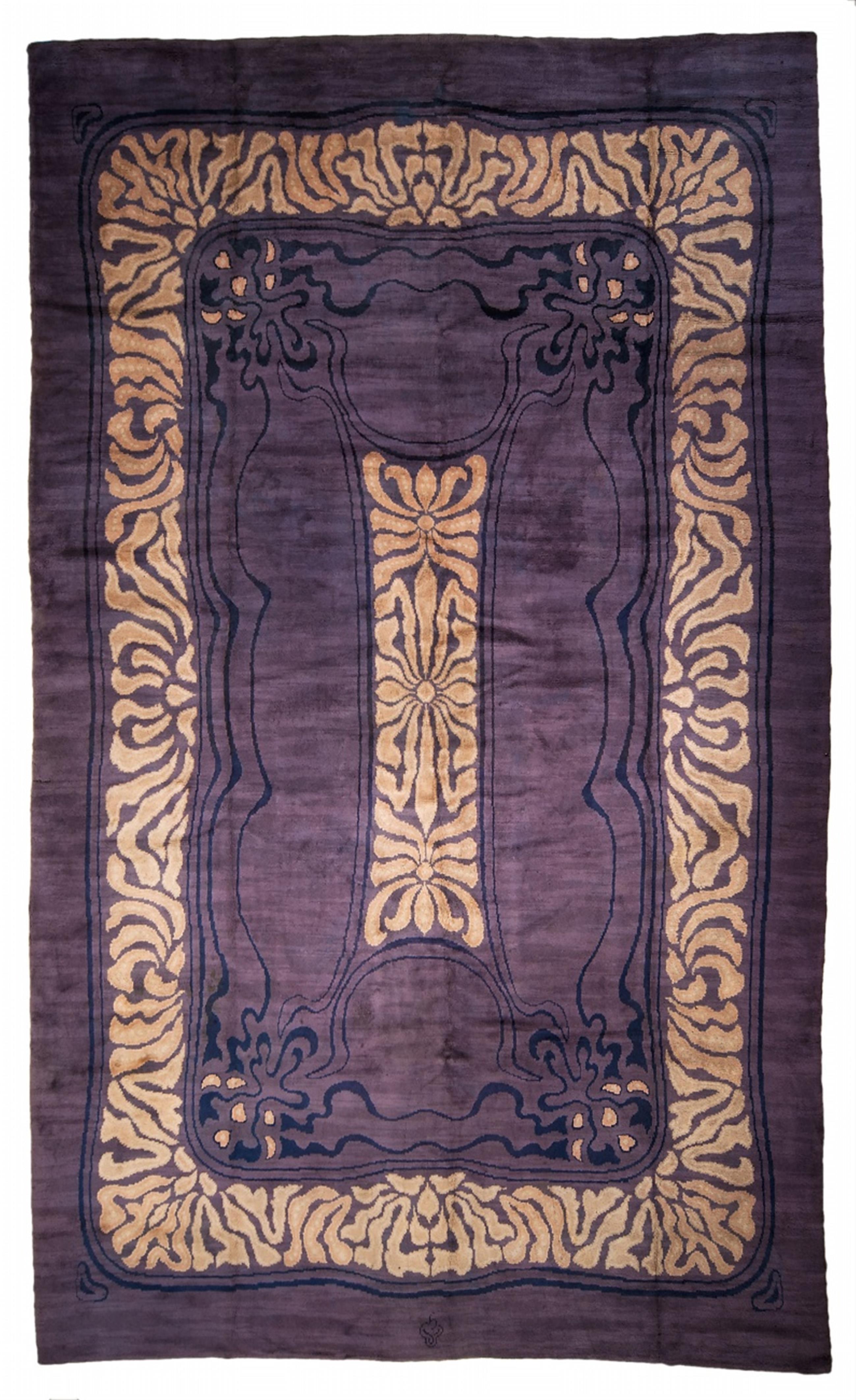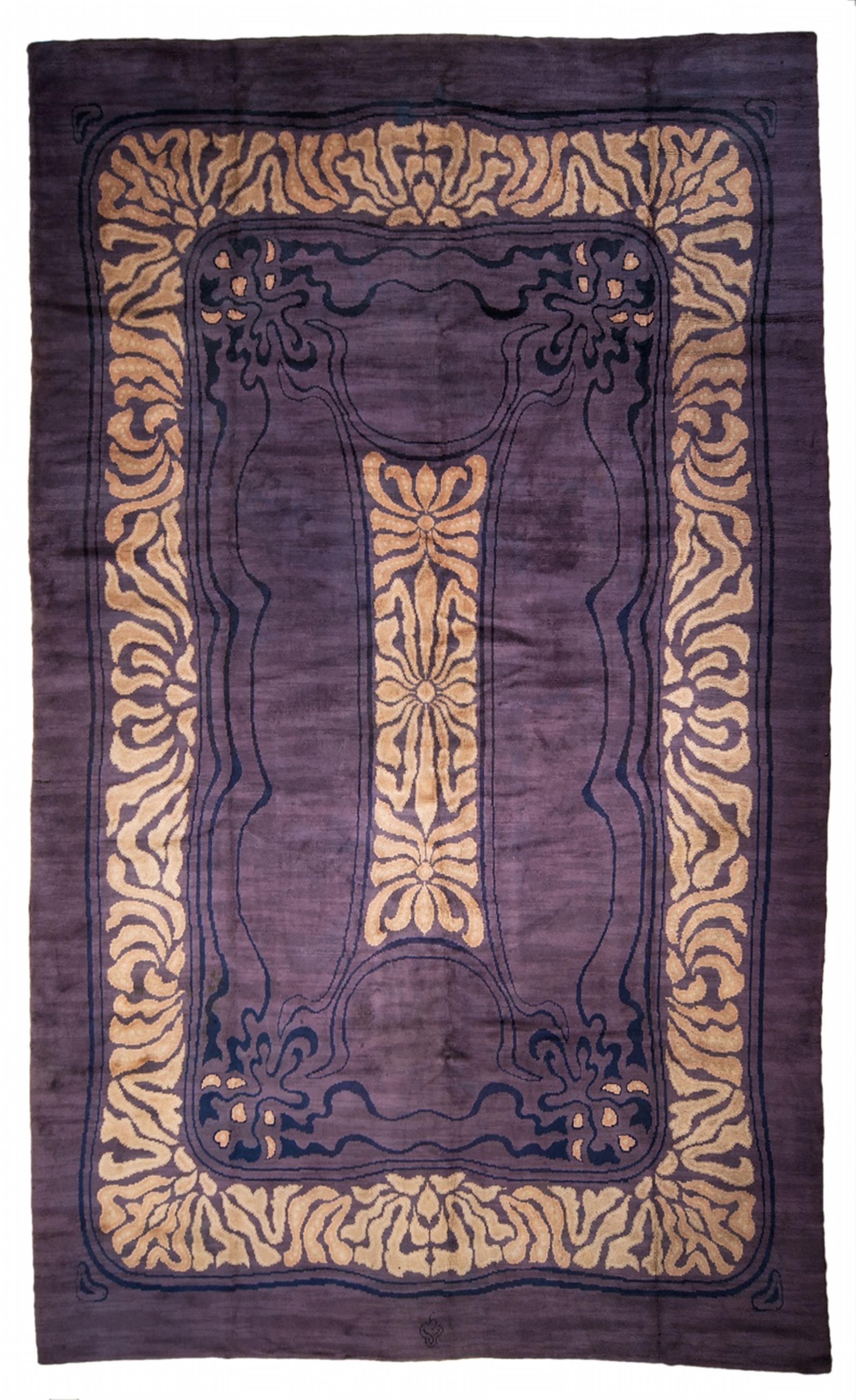A large, woolen Jugendstil carpet designed by Otto Eckmann
With the faux signet of van de Velde to the upper centre, one corner to the reverse woven with no. "088". Slightly soiled, some holes, partially reduced pile, some areas faded. 546 x 393 cm.
Woven by the Vereinigte-Smyrna-Teppich-Fabriken Berlin, pre 1902.
In contrast to English interiors of the time around 1900, for which carpets were made in contemporary designs in fitting with the furniture and décor, in Germany under Emperor Wilhelm even in rooms furnished in the German avant-garde style floors tended to be carpeted in traditional Oriental, usually Persian, rugs. This tendency gradually began to wane after the turn of the century, not least due to the influence of Henry van de Velde, whose designs were also produced by the Vereinigte Smyrna-Teppich-Fabriken. The modern style of carpet achieved its initial market breakthrough in Germany with van de Velde's “Kokosmatte Tunis”, which was produced by August Bosse in Weimar as of 1904. This spurred the manufacture of the machine-woven flooring materials with modern décor which determine the look of our interiors to this day.
As revolutionary as Eckmann's designs were in their times, they didn't find favour with a large audience. This carpet after an ornamental design by Otto Eckmann was only produced in a small edition of no more than two dozen examples in three different colourways. In contrast, Eckmann's famous “Five Swans” tapestry was woven around 100 times in Scherrebek and was a great financial success (“Fünf Schwäne” tapestry last sold in Lempertz auction 1039, November 2014, lot 947.)






